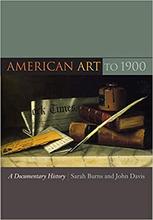More about Daniel in the Lions' Den
- All
- Info
- Shop

Contributor
In Henry Ossawa Tanner’s Daniel in the Lions’ Den, Daniel managed not only to appear surprisingly calm, but also to do so while standing in the best spot in the den - right where the sun was shining through.
We’ve all experienced those moments on an otherwise cold day, when the sun’s beam reached through the window and turned a section of the carpet into a warm respite. But in this piece, the depicted Daniel was so bold as to take the den’s main sun spot from the surrounding lions. He even seemed to manage to find a moment of spirituality in the middle of his imminent danger.
The reason for Daniel’s placidity, according to the bible, was that he possessed complete faith in God to protect him from the lions. Daniel had worked his way to the top of King Darius’s court (the king of Persia), but Daniel’s colleagues grew increasingly jealous of his rapid succession through the court. They convinced the king that Daniel didn’t deserve his placement in the court and that the king should condemn him. The king, unknowing of their ulterior motives, threw Daniel into the lions’ den. God looked after him though, sealing the lions’ mouths so they couldn’t attack him, until he was eventually pulled up from the den. The story of Daniel in the lions’ den is one of the most popular bible stories, and versions have been painted by Peter Paul Rubens, Jan Brueghel, and many others.
This painting was a similar but later version of the same painting that the Paris Salon accepted in 1896, awarding it an honorable mention. The honorable mention at the Salon happened during a time when acceptance into the Paris Salon granted artists immense global esteem. It was this painting’s acceptance that ultimately launched Tanner’s entire career as an internationally acclaimed artist.
The piece also represented a turning point in the kind of art that Tanner would produce. In the past he had focused his paintings on French peasants and African Americans, but in 1896 his work took a sharp turn for the religious. In a letter to his parents, just before the painting was accepted, Tanner explained that he began to work on religious pieces because he was battling with personal problems of his own faith. He wrote, “The Lord has been good and how unfaithful I have been, how far I have lived from what it was my privilege to live. How very sorry I am. How by the help of the Lord I am going to try to live much more faithful to Him.” Soon after this letter, he produced the original Daniel in the Lions’ Den, which took on quick popularity, and after that, he produced strongly religious works for the remainder of his career.
Sources
- Booker, Bobbi. 2012. "Tanner Blazed a Trail for Future Artists." Philadelphia Tribune, Jan 27, 1. https://login.libproxy.newschool.edu/login?url=https://search-proquest-….
- "Daniel in the Lions' Den." Daniel in the Lions' Den | LACMA Collections. Accessed October 29, 2018. https://collections.lacma.org/node/228961.
- Woods, Naurice Frank. "Embarking on a New Covenant: Henry Ossawa Tanner’s Spiritual Crisis of 1896." American Art 27, no. 1 (2013): 94-103. doi:10.1086/670686.














My eye was drawn to this painting instantly, my first thought was "just like Daniel!" and then I actually looked at the name of the painting and I was dead on. I enjoy this painting because of the symbolization behind it and how relaxed and calm the artist was able to portray the lions and Daniel.